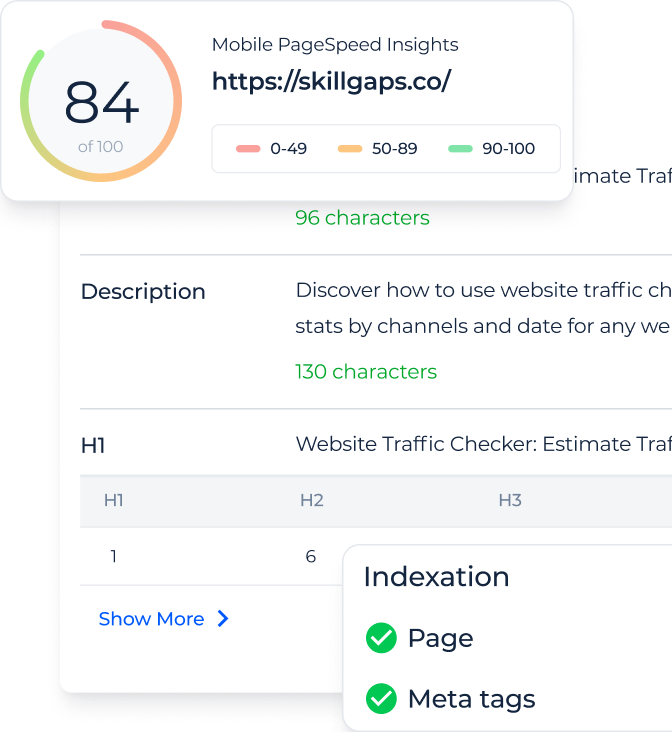What is a Subdomain Finder?
A Website Subdomain Finder by Sitechecker is a tool or software used to identify the subdomains of a given domain name. The tool provides a technical assessment of child domains and detects errors through a comprehensive audit.
How the tool can help you
Infrastructure Analysis: It allows for assessing how different parts of a website or service are structured and deployed.
All subdomain pages Detection: Finding all subdomain pages and errors associated with these pages.
Internal Audits and Monitoring: Regularly checking child domains is part of an internal audit process to ensure that all online assets are accounted for and properly managed.
Key Features of the Subdomain Scanner Tool
Unified Dashboard: Offers a centralized view of SEO metrics and website analytics, with real-time data tracking and customizable widgets.
User-Friendly Interface: Features intuitive navigation, clear data visualizations, and guided actions for ease of use, suitable for both beginners and experts.
Complete SEO Toolset: Includes a website health checker, rank tracker, backlink tracker, on-page SEO checker, site monitoring, and competitor analysis, providing a thorough suite of tools for optimizing website performance.
How to Use the Tool
After initiating the scan, the tool examines your domain and all its subdirectories. It performs a comprehensive analysis of the pages within these child domains, detecting various errors such as server response codes and inaccessible pages. The full site audit encompasses over 300 potential issues, including tests for links, indexing, content, code verification, and more.
Step 1: Examine your domain and all its subdomains
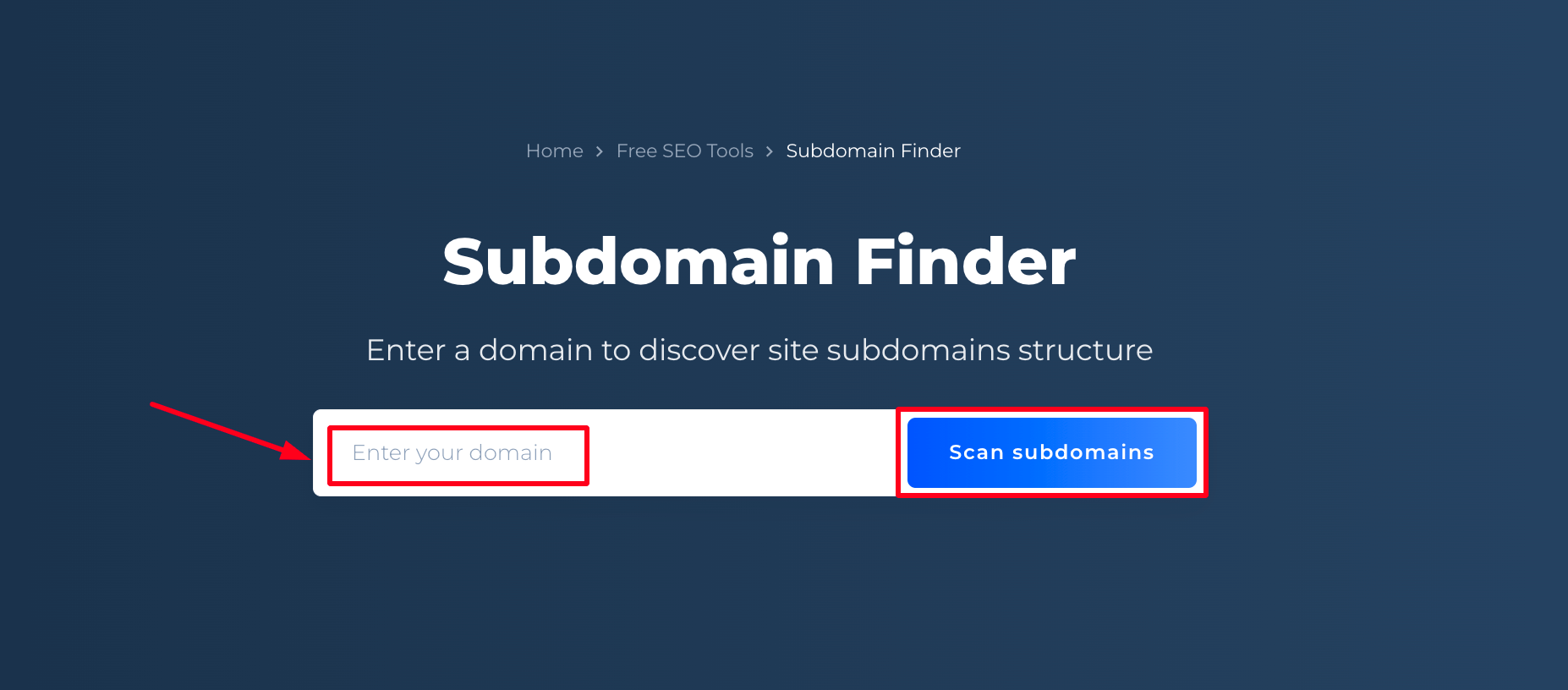
Step 2: Get results
Our Online Subdomain Finder is a robust platform designed to optimize your website’s SEO health. The tool simplifies complex data, categorizing issues to help prioritize your SEO strategy. The Website Score feature gives you a snapshot of your site’s overall SEO health.
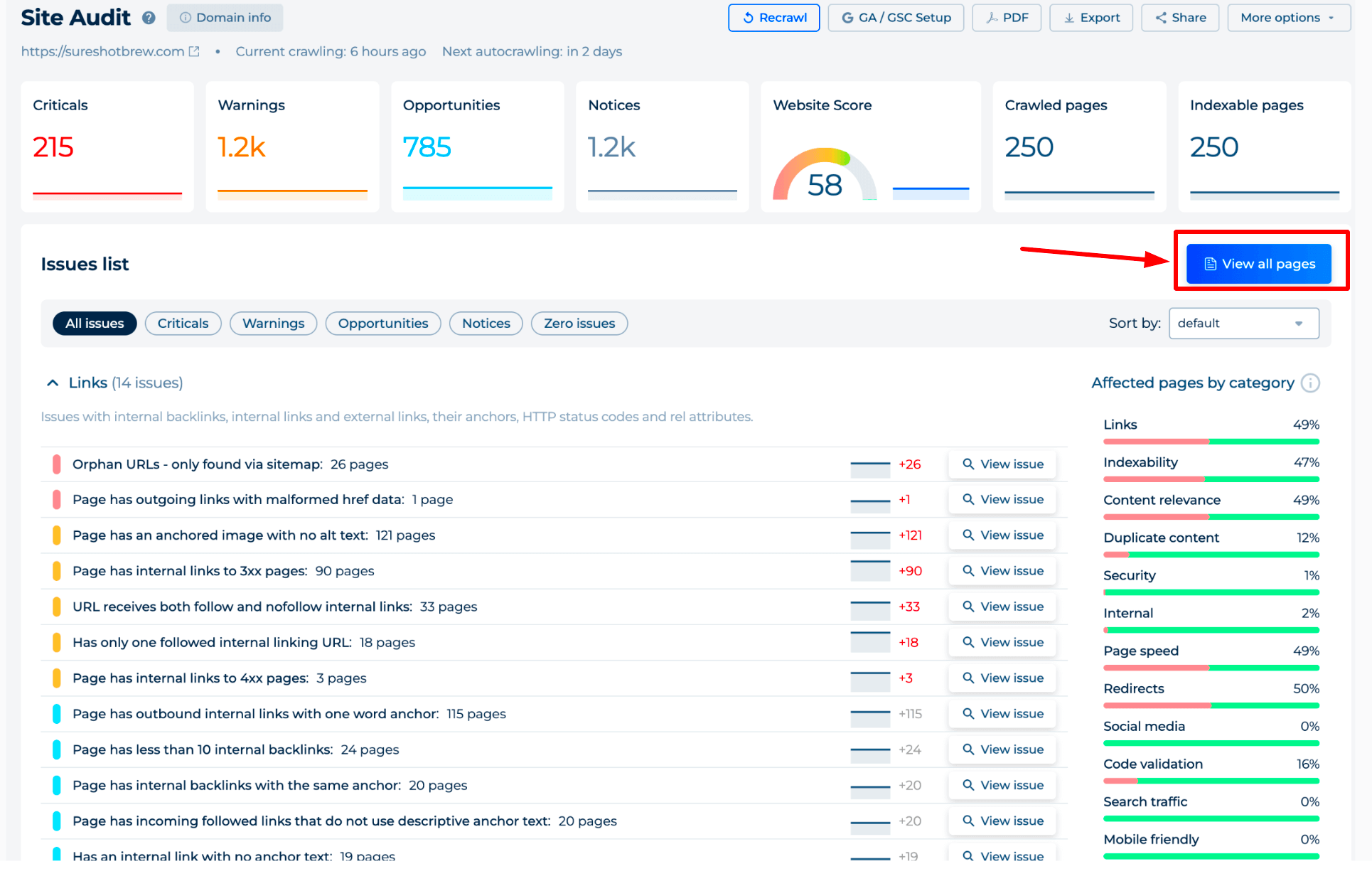
To transition from examining the primary domain to assessing subdomains, simply click on “View all pages.”
To prioritize subdomain pages, click the “Page URL” and sort the data accordingly. This will display a list of all pages within the subdirectories, which you can then export to an Excel file for further analysis and work.
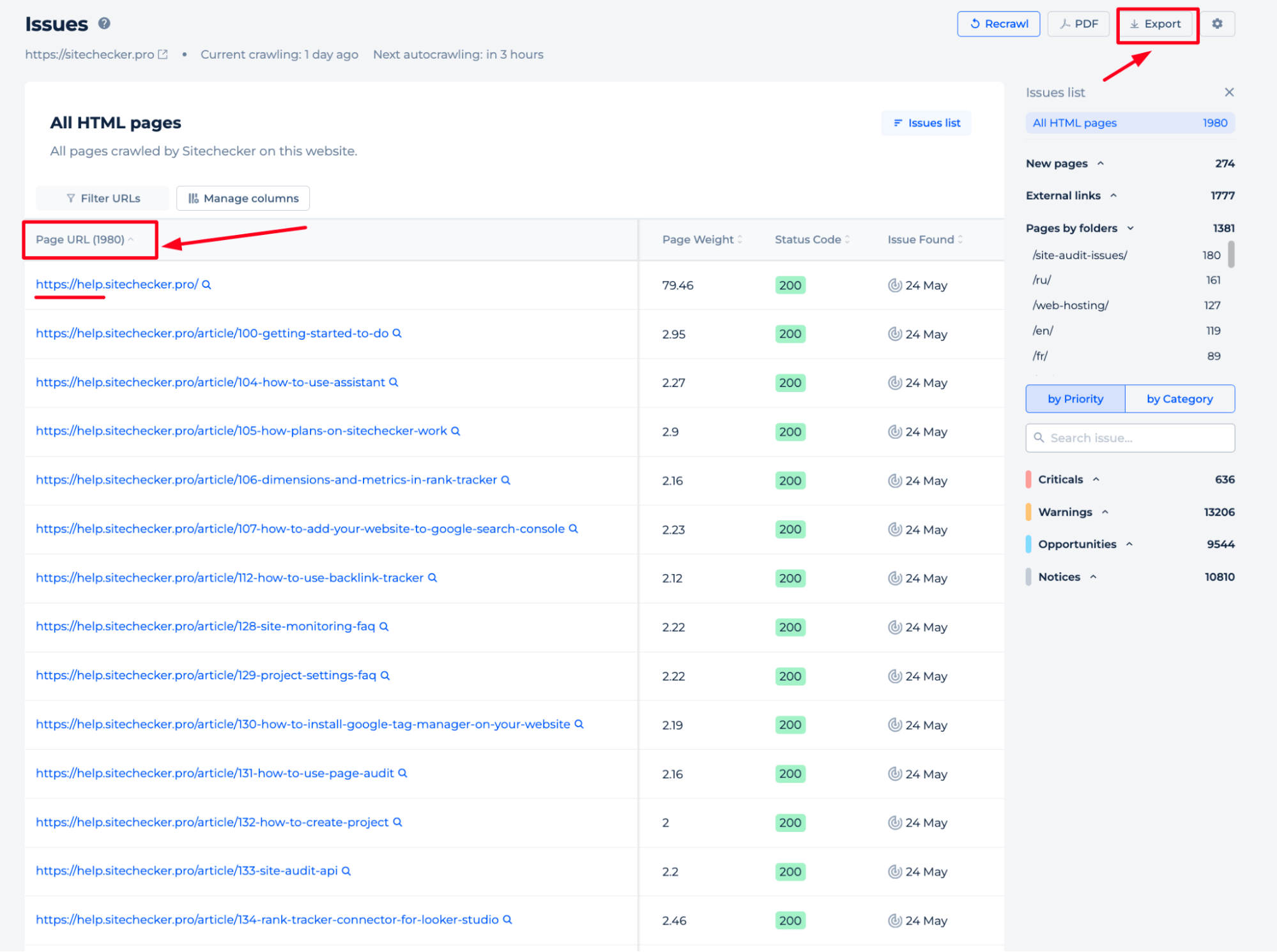
To display the pages of a specific subdomain in the table, just apply the data filter by selecting the name of that domain:
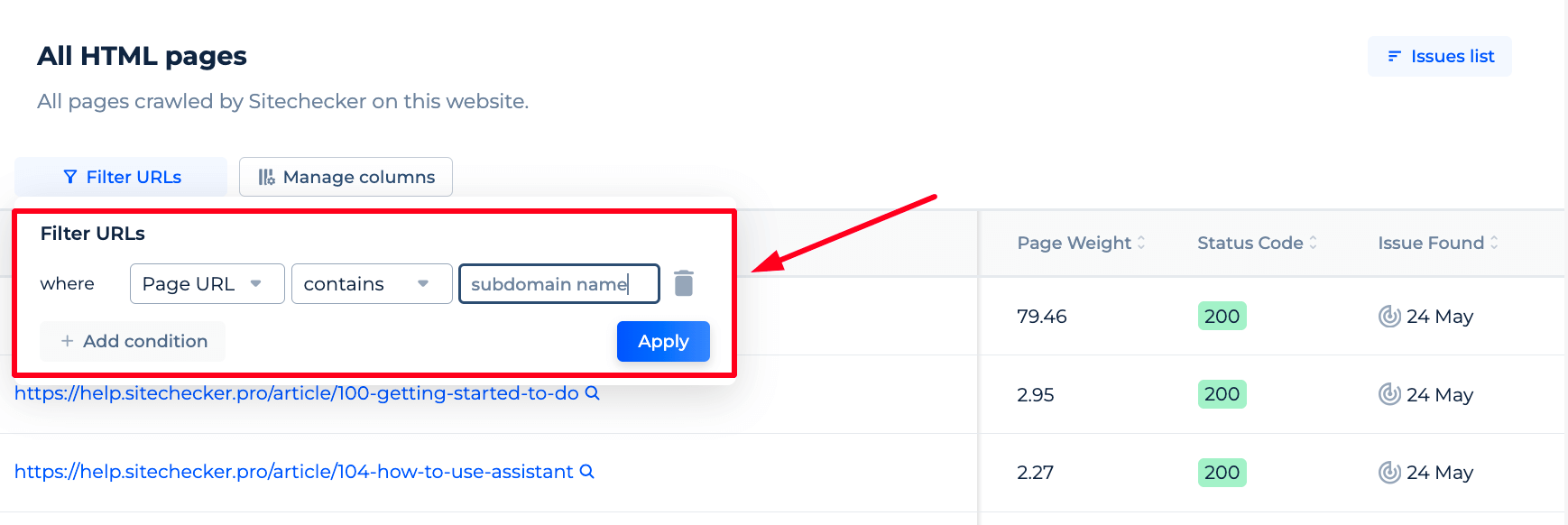
Additional Features of Subdomain Finder Online Instrument
The tool provides a robust interface for conducting a comprehensive site audit. It highlights critical issues, warnings, and opportunities for SEO improvement and displays them alongside a Website Score for quick assessment. You can view a categorized list of specific issues affecting your site, such as links with problems or pages with speed issues.
The tool displays an “Affected pages by category” section, showing the percentage of pages with issues in categories like Links, Content relevance, and Page speed, aiding in pinpointing areas for SEO optimization across subdirectories.
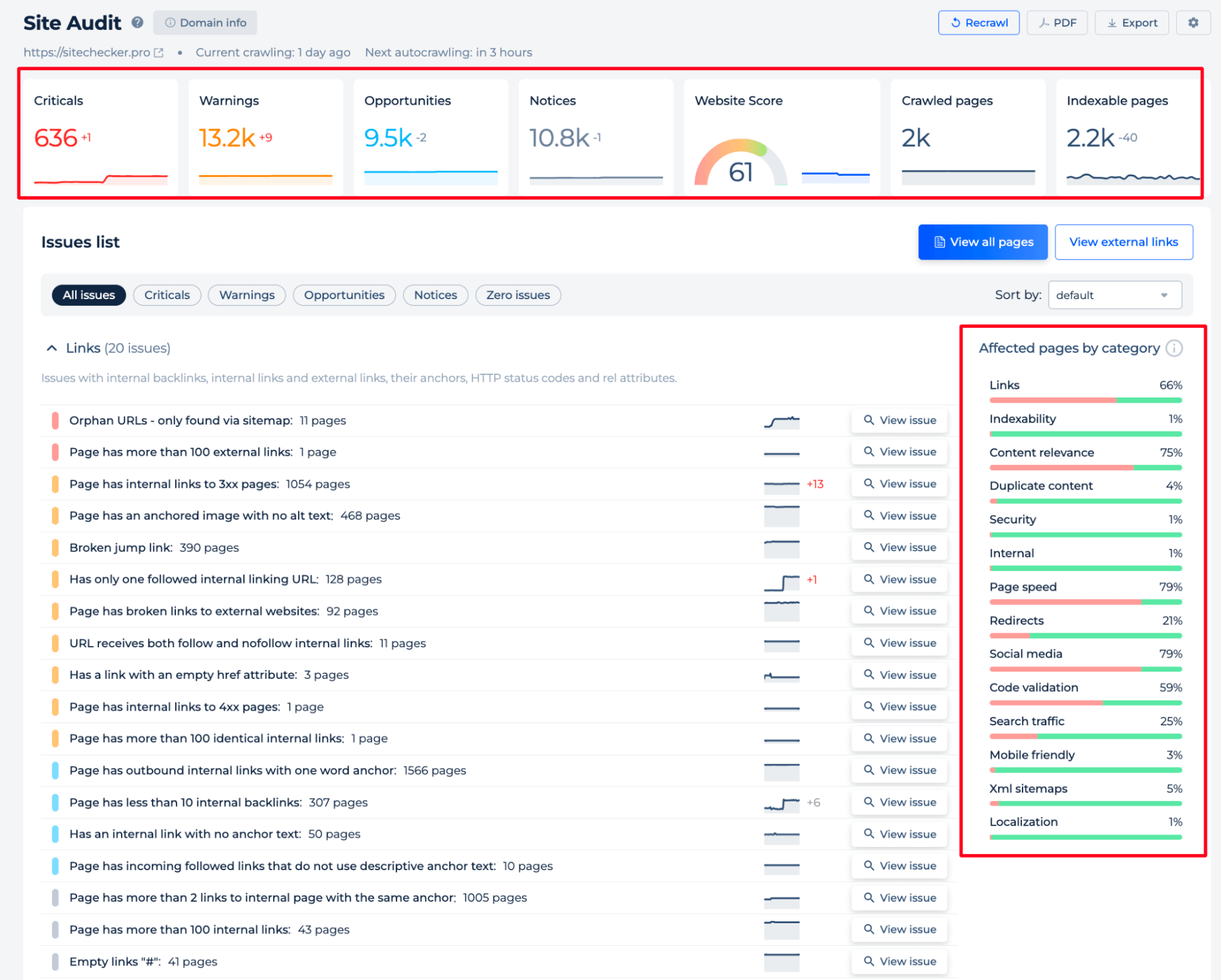
Final Idea
The Subdomain Finder Tool is a valuable resource for enhancing SEO health, offering infrastructure insights, and aiding content strategy. Its features include a centralized dashboard, intuitive navigation, and a full suite of SEO tools. Simple steps allow for the easy discovery and analysis of child domains, which is crucial for competitor analysis, compliance, and internal audits. With its comprehensive site audit capabilities and user-friendly interface, the tool is pivotal for identifying and rectifying SEO issues, ensuring a well-managed and optimized online presence.











